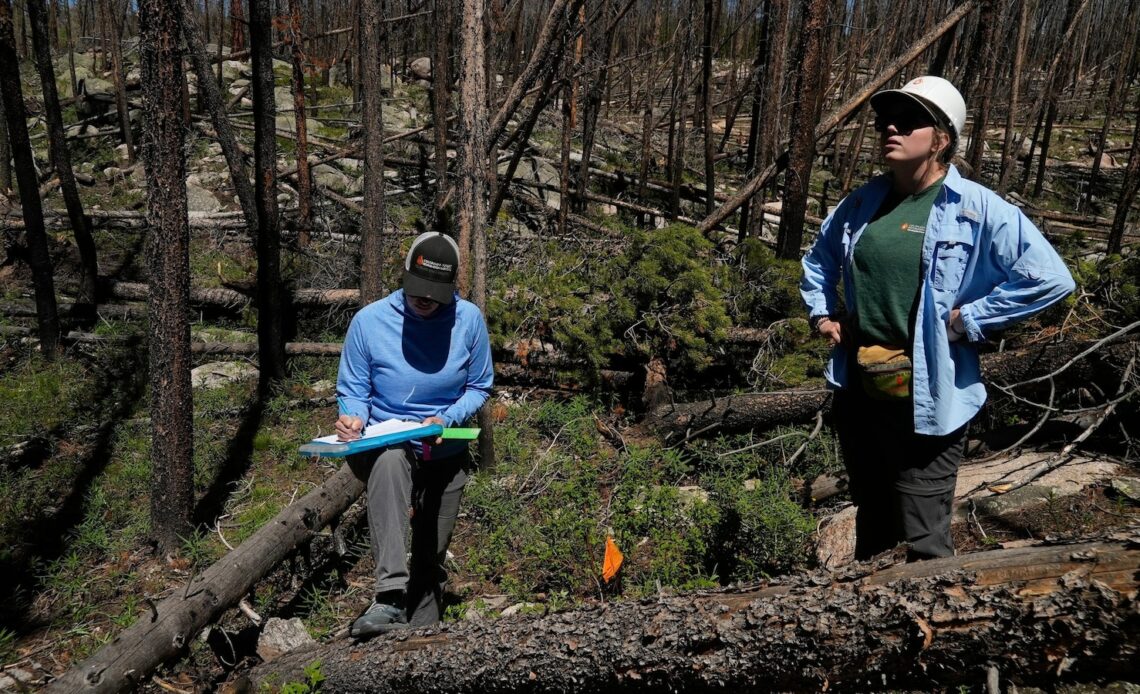BELLVUE, Colo. — Camille Stevens-Rumann crouched in the dirt and leaned over evergreen seedlings, measuring how much each had grown in seven months.
“That’s two to three inches of growth on the spruce,” said Stevens-Rumann, interim director at the Colorado Forest Restoration Institute.
Her research team is monitoring several species planted two years ago on a slope burned during the devastating 2020 Cameron Peak fire, which charred 326 square miles (844 square kilometers) in the Rocky Mountains of Colorado.
They want to determine which species are likely to survive at various elevations, because climate change makes it difficult or impossible for many forests to regrow even decades after wildfires.
As the gap between burned areas and replanting widens year after year, scientists see big challenges beyond where to put seedlings.
The U.S. currently lacks the ability to collect enough seeds from living trees and the nursery capacity to grow seedlings for replanting on a scale anywhere close to stemming accelerating losses, researchers say. It also doesn’t have enough trained workers to plant and monitor trees.
The Forest Service said the biggest roadblock to replanting on public land is completing environmental and cultural assessments and preparing severely burned areas so they’re safe to plant. That can take years — while more forests are lost to fire.
“If we have the seedlings but we don’t have the sites prepped … we can’t put the seedlings out there,” said Stephanie Miller, assistant director of a reforestation program.
Scientists, private industry and environmental agencies are acutely aware of the challenges as they consider how to restore forested landscapes in an increasingly arid region.
“We need to start being creative if we want trees on our landscapes,” Stevens-Rumann said. “We’re in a place of such drastic climate change that we are not talking about whether or not some of these places will be a different kind of forest, but whether or not they will be forests at all.”
Four years after the Cameron Peak fire — the largest in recorded Colorado history — a smattering of wild raspberry bushes and seedlings has taken root. But the mountainside mostly is dotted with charred trees.
In burn scars across the West and Southwest, areas of forests may never grow back on their own.
Larger and more intense fires destroy trees that normally provide seeds for regeneration or leave burn scars so large trees can’t naturally bridge the gap….
Click Here to Read the Full Original Article at ABC News: Business…

